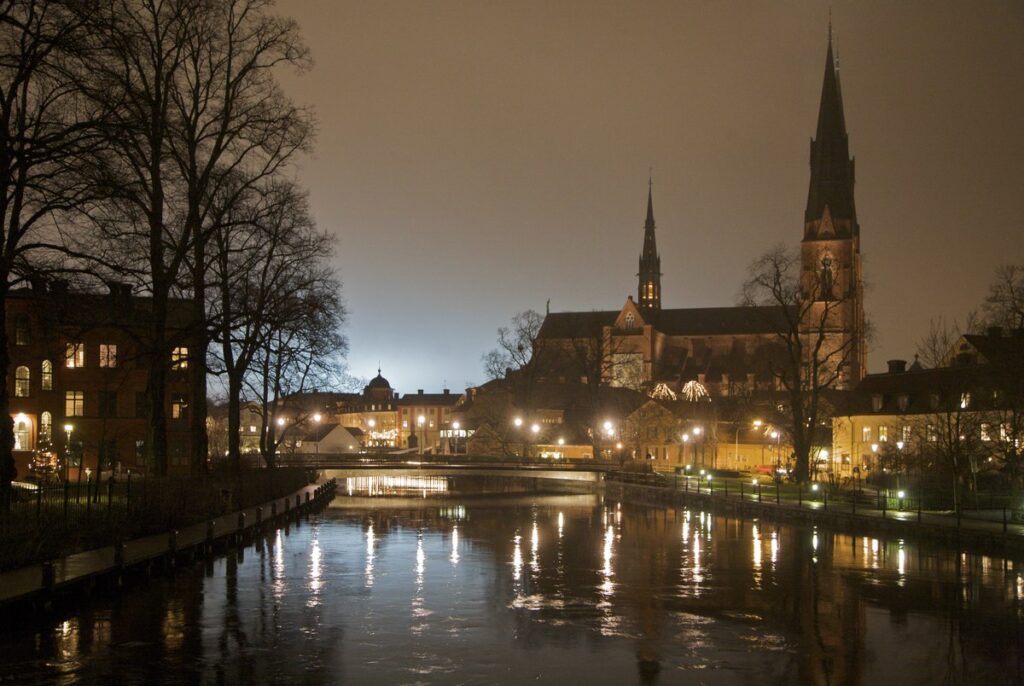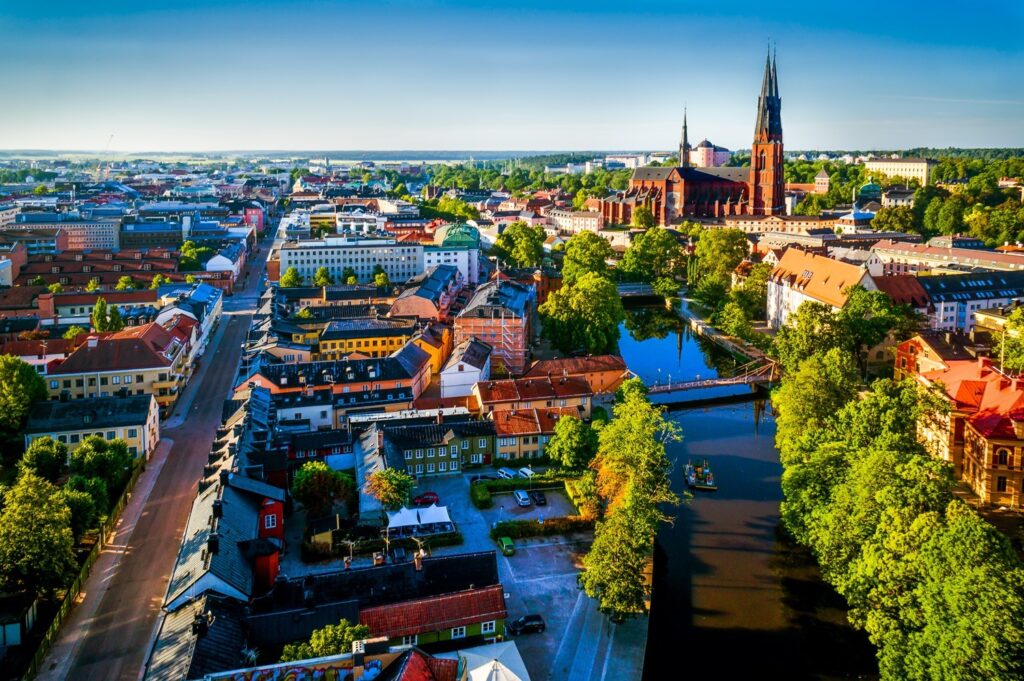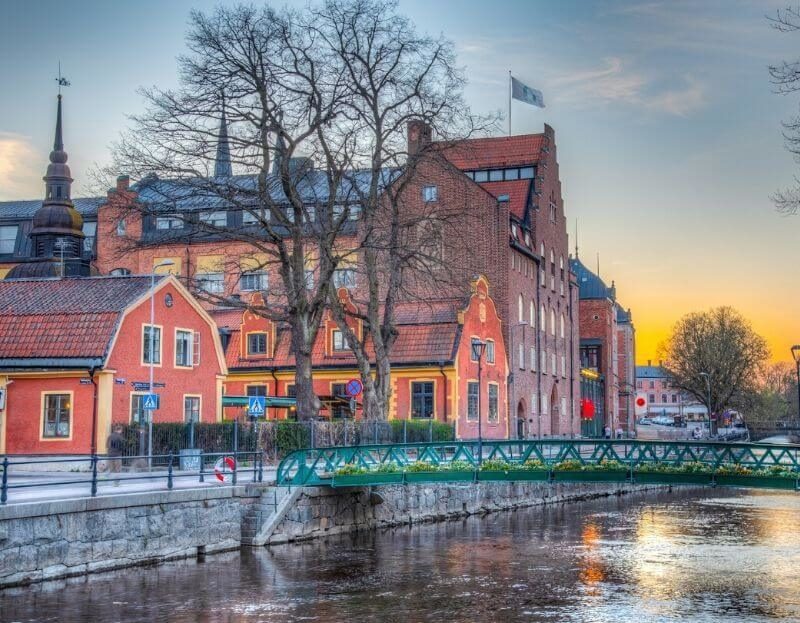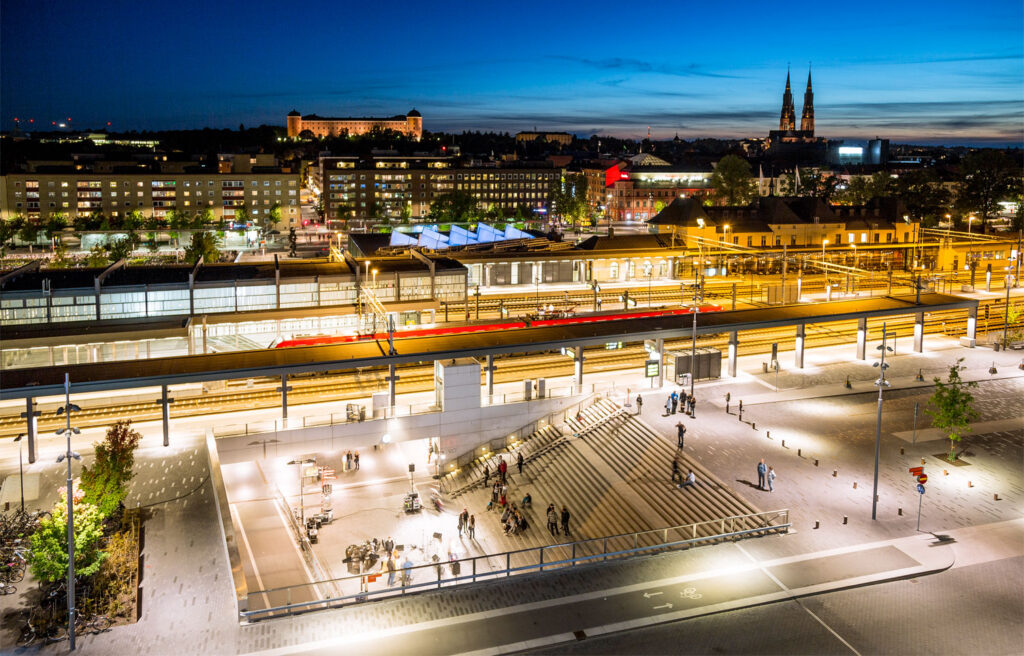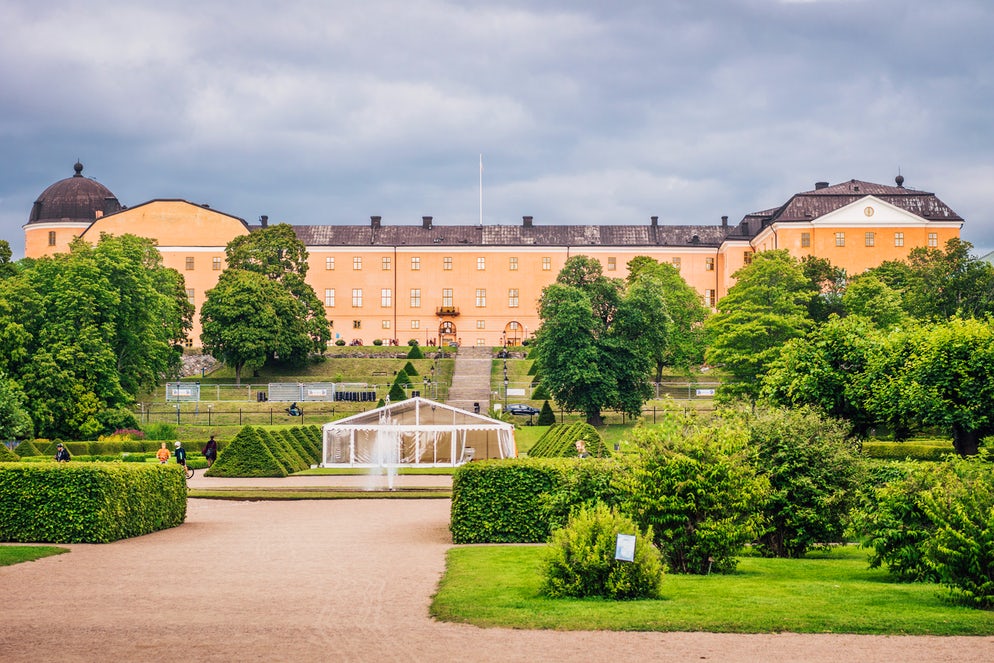Uppsala is the county seat of Uppsala County and the fourth-largest city in Sweden, after Stockholm, Gothenburg, and Malmö. It had 177,074 inhabitants in 2019.
Located 71 km (44 mi) north of the capital Stockholm it is also the seat of Uppsala Municipality. Since 1164, Uppsala has been the ecclesiastical centre of Sweden, being the seat of the Archbishop of the Church of Sweden. Uppsala is home to Scandinavia’s largest cathedral – Uppsala Cathedral. Founded in 1477, Uppsala University is the oldest centre of higher education in Scandinavia. Among many achievements, the Celsius scale for temperature was invented there.
Economy
Uppsala has economic development in many sectors. Today Uppsala is well established in medical research and recognised for its leading position in biotechnology.
- Abbott Medical Optics (AMO)
- Cytiva
- Pfizer (see Pharmacia)
- Phadia, an offshoot of Pharmacia, now a part of Thermo Fisher Scientific
- Fresenius
- Q-Med (bioscience)
- Biotage
- Skandion Kliniken, proton therapy centre
Higher education
Universities
- Uppsala University. Founded in 1477, under bishop Jakob Ulvsson. Originally a Catholic institution, after limited activity following the Reformation it was re-organised as a Lutheran institution in 1595, following the Uppsala Synod in 1593. The university has a famous anatomical theatre, constructed by the scientist and polymath Olof Rudbeck (1630–1702), in the old university building Gustavianum. The building is now a museum. The university has 13 student fraternities, known as “nations”, each traditionally representing a geographical region of Sweden.
- Swedish University of Agricultural Sciences (SLU, Sveriges Lantbruksuniversitet, main campus).
Other higher education
- Johannelunds Teologiska Högskola. A Lutheran theological seminary established in 1862, located in Uppsala since 1970.
- The Newman Institute. A Catholic institution founded in 2001.
- Pingströrelsens teologiska seminarium. A Pentecostal theological seminary, which does not have accreditation from the Swedish National Agency for Higher Education and cannot confer Swedish academic degrees.
Museums and sights
The Fyris river (Fyrisån) neatly divides the city into two different parts: the historic quarter to the west of the river and the modern administrative, residential and commercial city centre to the east. Most of the historical sights and university buildings are in the western part, with a medieval street layout, river views and parks and dominated by the cathedral.
The most outstanding building in Uppsala is the Domkyrka (Uppsala Cathedral), Scandinavia’s largest church building (118.70 m (389.44 ft) high). Together with Uppsala Castle it has dominated Uppsala’s skyline since its construction in the 13th century and can be seen from a long distance outside the city, other tall buildings being rare.
Facing the west end of the cathedral is the Gustavianum, built in 1625 to be the main building of the University, and served as such through most of the 19th century. It contains the Museum of Nordic Antiquities, the Victoria Museum (of Egyptian antiquities) and the University’s cultural history collections. It also houses a perfectly preserved 17th-century anatomical theatre (used in its time for public dissections). Next to Gustavianum is the 18th century Archbishop’s Palace, the official residence of the Lutheran Archbishop of Uppsala and the primate of the Church of Sweden.
Across the street from the Gustavianum in the University Park stands the University Hall, erected in 1879–86 in Italian renaissance style. The Uppsala University Coin Cabinet is located in the university main building.Uppsala Castle
Not far from the University stands the Uppsala University Library (Carolina Rediviva), the largest library in Sweden, with over 5 million volumes and some 60,000 manuscripts. The building was built in 1820–41.
On a circa 35-metre high hill to the southwest of the University Library stands Uppsala Castle. Its construction was initiated in 1549 by King Gustav Vasa, founder of the Vasa royal dynasty. Today the castle holds several museums, among them the regional art museum, and is the residence of the Uppsala County Governor (landshövding).
There are several botanical museums in Uppsala related to the world-famous 18th century botanist and zoologist Carl Linnaeus; the Botanic Garden next to the castle, the Linnaean Garden in the city centre, and Linnaeus Hammarby, Linnaeus’ summer house in the countryside village of Danmarks Hammarby south of the city.
5 kilometres (3 miles) north of Uppsala city lies Gamla Uppsala (Old Uppsala), the location of the pre-Christian settlement of Uppsala which later provided the new name for the medieval settlement further south. There are few remains, with the exception of several huge burial mounds of pre-Christian monarchs and the previous cathedral from 1164 A.D., traditionally said to be built over the old heathen temple (and recent archaeological investigations seems to support this notion). The site was a major religious centre in Scandinavia in pre-Christian times. After the old cathedral church burned down around 1240 it was only partially restored to a more modest size as it no longer was the seat of the Archbishop.[18] The Gamla Uppsala Museum exhibits archeological finds made during excavations in Gamla Uppsala and related finds from other parts of Uppland, as well as exhibitions on the history of the site itself.
Transportation
Trains depart Uppsala Central Station in three directions. There are trains to the south , Arlanda, Stockholm and Linköping, to the northwest, Dalarna and Sala, and to the north Gävle, Sundsvall, Östersund and to the northern half of Sweden as well as sleeper trains to Narvik in Norway.
While Uppsala has no civilian airport of its own, Arlanda Airport is located about 30 km south of Uppsala. Ärna Airport north of Uppsala is a military airport.
Public transport buses and trains within Uppsala county are operated by UL.

